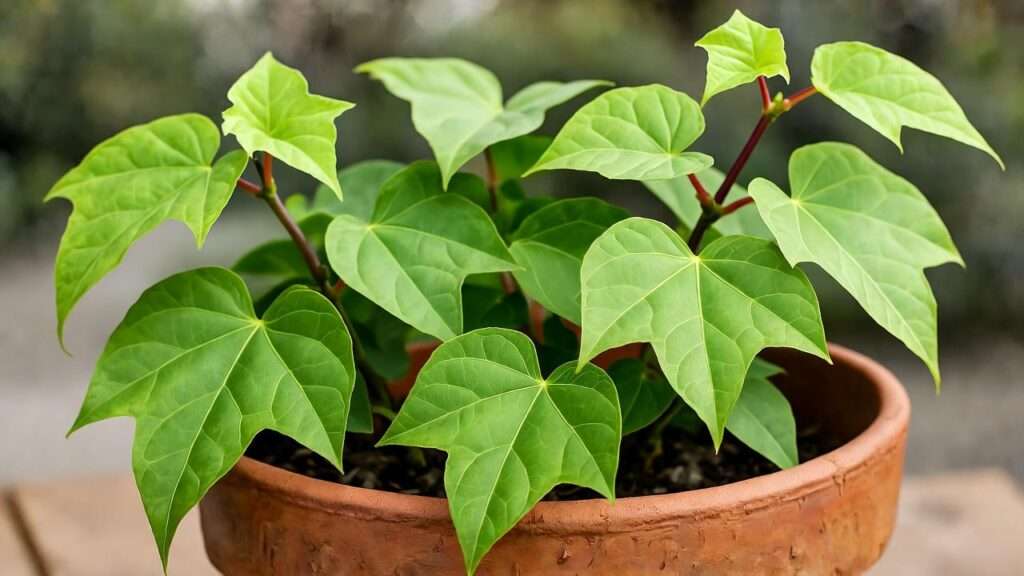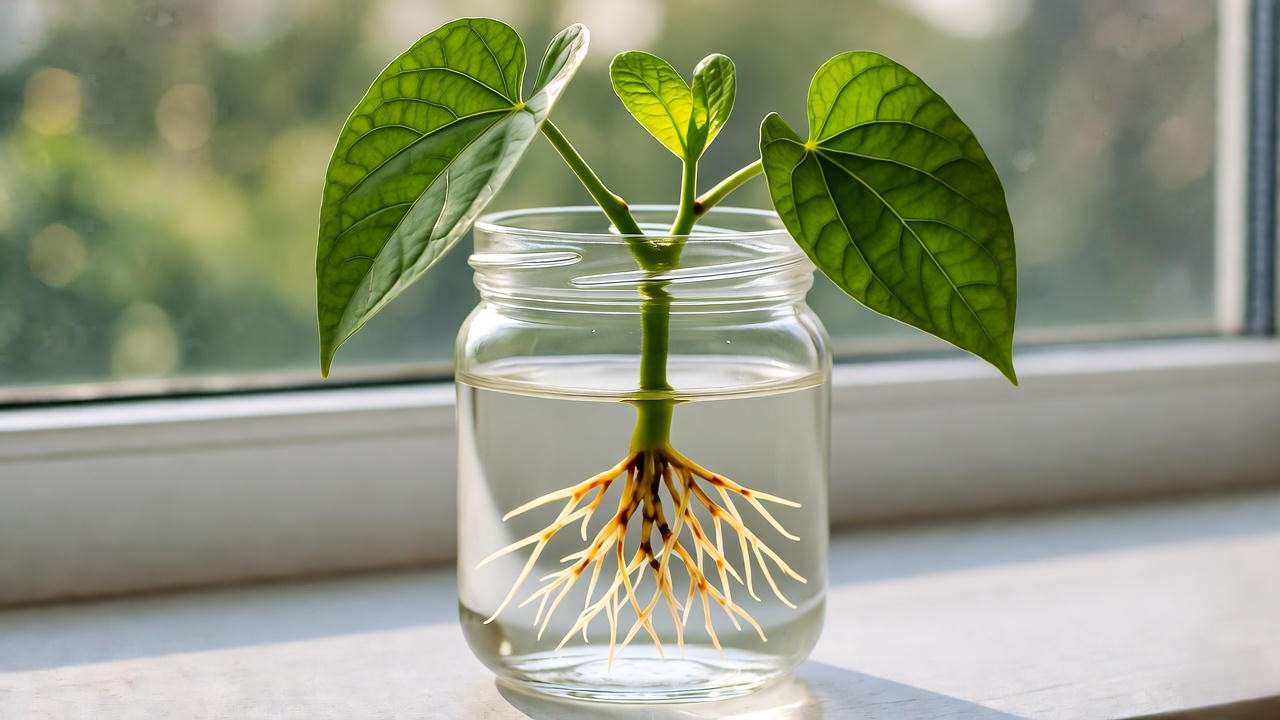Imagine transforming your home into a lush, tropical paradise with a single plant! The Cissus discolor plant, often called the Rex Begonia Vine, is a showstopper with its velvety green leaves, shimmering silver veins, and striking reddish undersides. Whether you’re a seasoned plant parent or a beginner eager to elevate your indoor jungle, this guide unlocks the secrets to growing a thriving Cissus discolor plant. From light and water to propagation and styling, we’ll cover everything you need to keep this beauty vibrant and healthy. 🌴
As a horticulturist with over a decade of experience cultivating tropical houseplants, I’ve nurtured countless Cissus discolor plants and helped plant enthusiasts achieve lush, vibrant growth. This comprehensive guide, rooted in science and practical expertise, will empower you to care for your Cissus discolor with confidence. Expect actionable tips, troubleshooting solutions, and creative ideas to make your plant a stunning centerpiece in your home. Let’s dive into the world of this captivating vine! 🌿
What is the Cissus Discolor Plant? 🌿
Overview of the Rex Begonia Vine
The Cissus discolor plant, a tropical gem native to Southeast Asia, is prized for its heart-shaped leaves adorned with silver variegation and rich burgundy undersides. Despite its nickname, it’s not a true begonia but a member of the grape family (Vitaceae), known for its climbing or trailing growth. This plant’s ability to cascade from hanging baskets or climb trellises makes it a versatile choice for indoor spaces. Its vibrant foliage adds a touch of the tropics, making it a favorite among plant collectors and interior decorators alike.
Originating from humid, forested regions of Java and Cambodia, Cissus discolor thrives in warm, moist environments. Its unique leaf patterns and adaptability have earned it a spot in homes and offices worldwide. Whether you’re drawn to its aesthetic appeal or its air-purifying potential, this plant is a must-have for anyone passionate about indoor greenery.
Benefits of Growing Cissus Discolor
Why choose Cissus discolor for your plant collection? Beyond its stunning appearance, this vine offers several benefits:
- Aesthetic Appeal: The vibrant foliage transforms any space into a tropical oasis, perfect for shelves, hanging baskets, or vertical gardens.
- Air Purification: Like many tropical plants, Cissus discolor may help improve indoor air quality by filtering pollutants, as supported by studies on similar species (NASA Clean Air Study, 1989).
- Space Versatility: Its climbing or trailing nature suits small apartments, large homes, or even office settings.
- Low Maintenance (with the Right Care): While it requires specific conditions, Cissus discolor is manageable for beginners who follow proper care guidelines.
Optimal Growing Conditions for Cissus Discolor 🌞
Light Requirements
Light is the key to unlocking the Cissus discolor plant’s vibrant leaf coloration. This plant thrives in bright, indirect sunlight, such as near an east- or north-facing window. Direct sunlight can scorch its delicate leaves, causing brown, crispy edges, while insufficient light dulls its silver variegation. Aim for 4–6 hours of filtered light daily to maintain its stunning appearance.
If your space lacks natural light, consider using a full-spectrum grow light (10,000–20,000 lux) for 8–12 hours daily. Rotate the plant every few weeks to ensure even light exposure, promoting balanced growth. For example, placing your Cissus discolor a few feet from a sheer-curtained window strikes the perfect balance.

Temperature and Humidity
Cissus discolor loves warm, humid conditions mimicking its tropical origins. Maintain a temperature range of 65–80°F (18–27°C), avoiding sudden drops below 60°F (15°C). Protect the plant from cold drafts, air conditioners, or heating vents, which can stress it and cause leaf drop.
Humidity is critical, with 50–70% humidity being ideal. In dry climates or during winter, boost humidity using these methods:
- Humidifier: A small ultrasonic humidifier near the plant works wonders.
- Pebble Tray: Place the pot on a tray of pebbles filled with water, ensuring the pot base stays above the waterline.
- Misting: Mist leaves 1–2 times weekly with distilled water to avoid mineral buildup.
For precise monitoring, use a hygrometer to ensure optimal humidity levels. A humid environment keeps leaves lush and prevents browning.
Soil and Potting
The right soil mix is essential for Cissus discolor’s health. Use a well-draining, peat-based potting mix combined with perlite or orchid bark for aeration. A mix of 50% peat moss, 30% perlite, and 20% potting soil works well. Good drainage prevents root rot, a common issue for this plant.
Choose a pot with drainage holes to allow excess water to escape. A 6–8-inch pot is ideal for young plants, while mature vines may need a 10–12-inch pot. Repot every 1–2 years or when roots become crowded, refreshing the soil to maintain nutrient levels. Terracotta pots are excellent for their breathability, but plastic works if drainage is ensured.
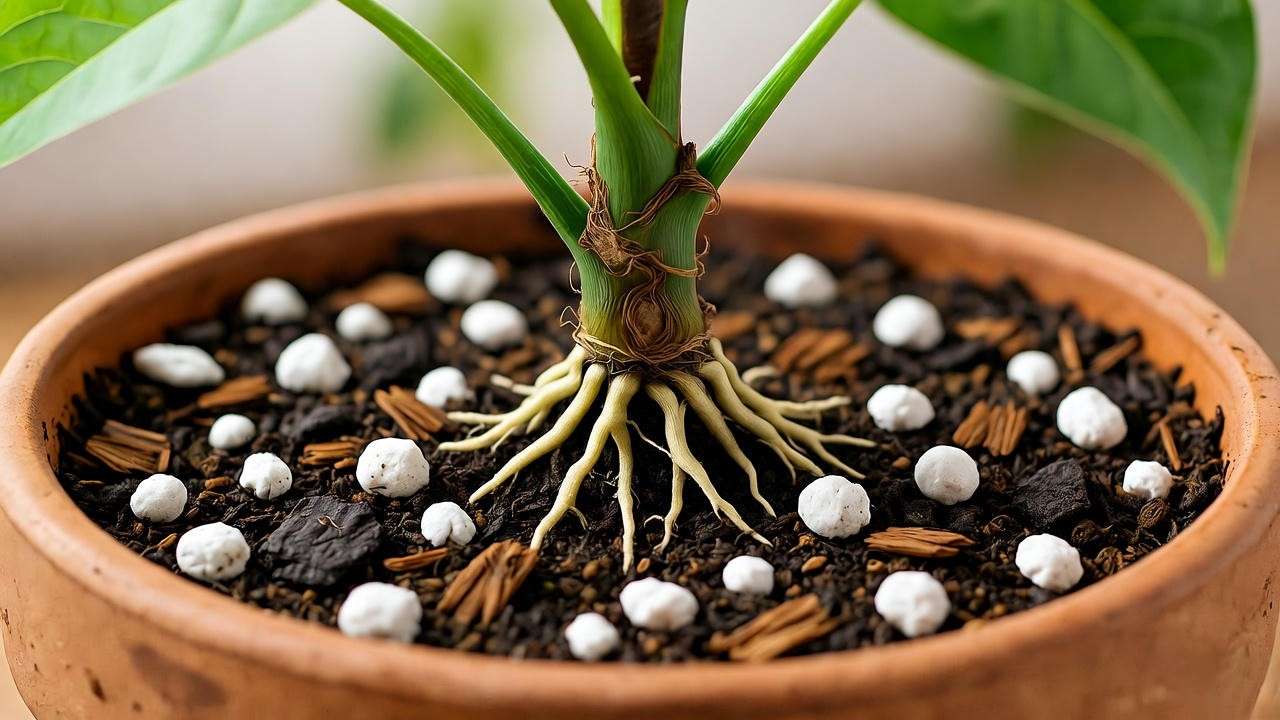
Watering and Feeding Your Cissus Discolor 💧
Watering Guidelines
Watering Cissus discolor requires a delicate balance. Keep the soil slightly moist but not soggy, allowing the top 1–2 inches to dry out between waterings. Overwatering leads to root rot, while underwatering causes wilting or leaf drop. Use room-temperature, distilled, or rainwater to avoid chemical buildup from tap water.
Watering Tips:
- Spring/Summer: Water every 5–7 days, checking soil moisture with your finger or a moisture meter.
- Fall/Winter: Reduce to every 10–14 days, as growth slows.
- Signs of Trouble: Yellowing leaves indicate overwatering; drooping leaves suggest underwatering.
For example, a plant in bright light may need more frequent watering than one in lower light. Always pour water evenly across the soil surface until it drains from the bottom, then empty the saucer to prevent standing water.
Fertilizing for Healthy Growth
To fuel vibrant foliage, fertilize Cissus discolor with a balanced liquid fertilizer (e.g., 10-10-10 or 20-20-20) diluted to half strength. Apply monthly during spring and summer, when the plant is actively growing. Avoid fertilizing in fall and winter to respect its dormant phase.
Fertilizing Tips:
- Use a water-soluble fertilizer and apply after watering to prevent root burn.
- Watch for signs of over-fertilization, like leaf tip burn or salt buildup on soil.
- Organic options, like diluted fish emulsion, can work but may have a stronger odor.
A thriving Cissus discolor will reward proper feeding with lush, colorful leaves. If growth slows, reassess light and nutrient levels before increasing fertilizer.
Pruning and Training Cissus Discolor ✂️
Pruning for Health and Aesthetics
Regular pruning keeps Cissus discolor healthy and visually appealing. Pruning encourages bushier growth, removes leggy or damaged stems, and maintains your desired shape. Use clean, sharp scissors or pruning shears to avoid introducing infections.
Pruning Steps:
- Identify leggy, yellowed, or damaged stems.
- Cut just above a leaf node at a 45-degree angle.
- Trim up to one-third of the plant at a time to avoid stress.
- Prune in spring for optimal recovery.
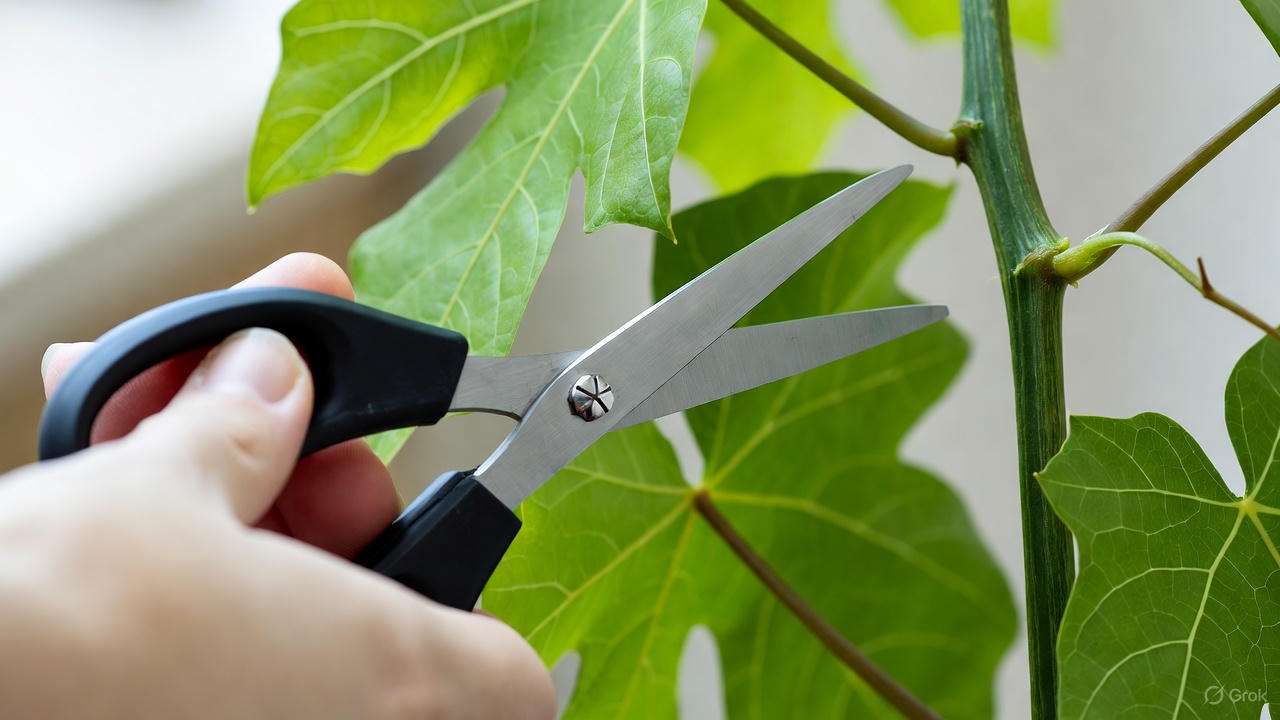
Save healthy cuttings for propagation or compost them. Regular pruning also improves air circulation, reducing pest risks.
Training as a Climber or Trailer
Cissus discolor’s vining nature makes it perfect for creative displays. Train it to climb a trellis or moss pole for a vertical accent or let it trail from a hanging basket for a cascading effect. Secure stems loosely with soft plant ties or twine to avoid damage.
Training Ideas:
- Trellis: Use a small bamboo or metal trellis for a structured look.
- Moss Pole: Ideal for humid environments, encouraging aerial roots to cling.
- Hanging Basket: Perfect for showcasing trailing vines in small spaces.
For inspiration, create a living wall by combining Cissus discolor with other tropical plants like pothos or philodendrons. Adjust training based on your space and aesthetic goals.
Propagating Cissus Discolor 🌱
Step-by-Step Propagation Guide
Propagating the Cissus discolor plant is a rewarding way to expand your collection or share this stunning vine with friends. The most effective method is stem cuttings, which can be rooted in water or soil. With proper care, cuttings root in 4–6 weeks, producing new plants to enjoy or gift. Here’s how to do it:
Propagation Steps:
- Select a Healthy Stem: Choose a 4–6-inch stem with at least 2–3 nodes (where leaves attach) and healthy, vibrant leaves. Avoid stems with signs of disease or damage.
- Cut and Prepare: Using clean, sharp scissors, cut just below a node at a 45-degree angle. Remove the lower leaves, leaving 1–2 leaves at the top.
- Rooting in Water:
- Place the cutting in a glass of room-temperature, distilled water, ensuring nodes are submerged but leaves stay dry.
- Change the water every 3–4 days to prevent stagnation.
- Place in bright, indirect light and wait for roots to grow 1–2 inches (typically 3–5 weeks).
- Rooting in Soil:
- Dip the cut end in rooting hormone (optional) to speed up rooting.
- Plant in a small pot with a moist, well-draining mix (e.g., 50% peat moss, 50% perlite).
- Cover with a plastic bag or humidity dome to maintain moisture, and place in bright, indirect light.
- Transplanting: Once roots are established, transfer water-rooted cuttings to soil or repot soil-rooted cuttings into a larger pot.
Tips for Successful Propagation
To maximize success, follow these expert tips:
- Use Rooting Hormone: A powdered or gel rooting hormone encourages faster root development, especially for soil propagation.
- Maintain High Humidity: Keep humidity at 60–80% during rooting to mimic the plant’s tropical origins. A clear plastic cover or mini greenhouse works well.
- Avoid Overwatering: For soil propagation, keep the mix moist but not soggy to prevent rot.
- Be Patient: Rooting can take time, so resist the urge to check roots too often, as this can disturb the process.
Common mistakes include using unhealthy cuttings, exposing them to direct sunlight, or neglecting humidity. With care, your Cissus discolor cuttings will thrive, giving you new plants to nurture or share.
Common Problems and Solutions 🐛
Pests and Diseases
While Cissus discolor is relatively resilient, it’s susceptible to common houseplant pests like spider mites, aphids, and mealybugs. Regular inspection and prompt action keep these issues at bay.
- Spider Mites: Look for fine webbing or stippled leaves. Treat by wiping leaves with a damp cloth and applying neem oil or insecticidal soap weekly until cleared.
- Aphids: Small, green insects cluster on new growth. Rinse them off with water and use a mild soap solution for persistent infestations.
- Mealybugs: White, cottony masses on stems or leaf joints. Dab with alcohol-soaked cotton swabs and follow with neem oil.
Fungal issues, like root rot or leaf spot, often stem from overwatering or poor air circulation. Ensure proper drainage and avoid wetting leaves during watering. For fungal spots, remove affected leaves and treat with a fungicide if needed. Prevent pests by maintaining a clean environment and inspecting new plants before introducing them to your collection.
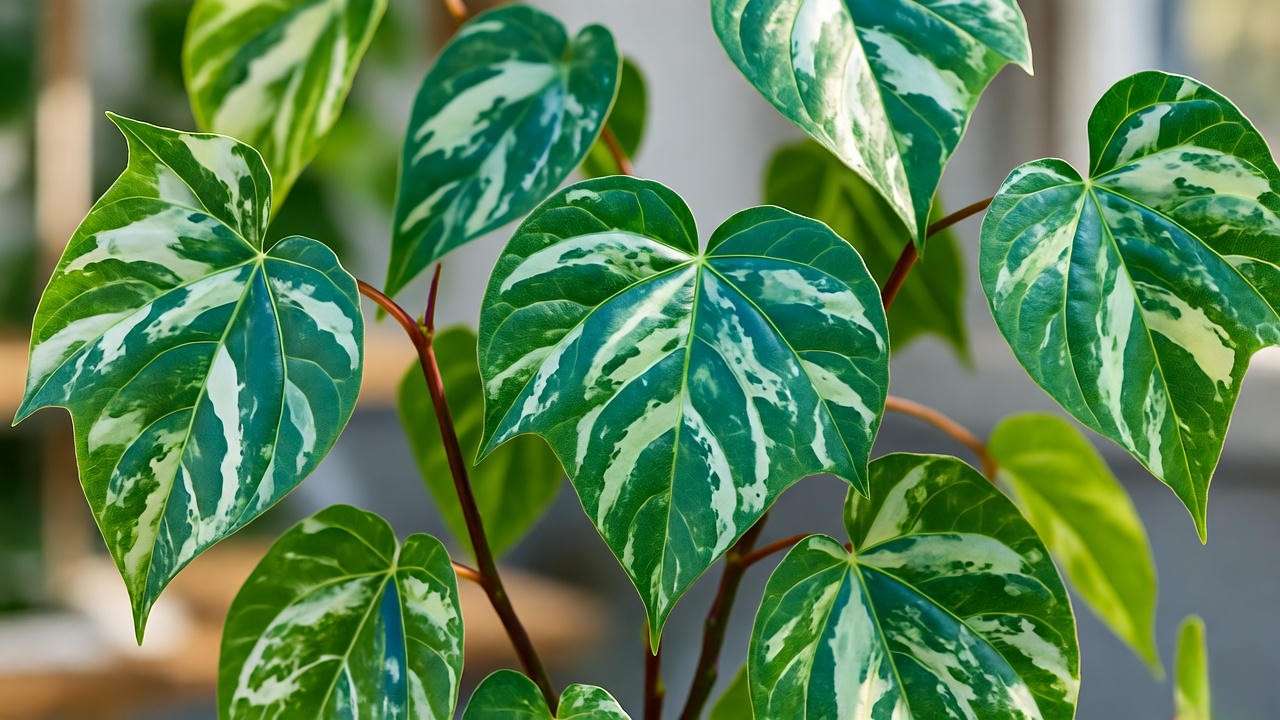
Troubleshooting Leaf Issues
Leaf problems are common but fixable with the right diagnosis:
- Yellowing Leaves: Often caused by overwatering or low humidity. Check soil moisture and reduce watering if soggy. Increase humidity with a pebble tray or humidifier.
- Dropping Leaves: Stress from sudden temperature changes, drafts, or insufficient light. Move the plant to a stable, warm spot with bright, indirect light.
- Fading Variegation: Dull silver veins indicate too little light or nutrient deficiency. Adjust to brighter, indirect light and fertilize monthly during the growing season.
Regular monitoring and adjusting care routines will keep your Cissus discolor vibrant. For example, if leaves lose their sheen, misting weekly with distilled water can restore their luster while boosting humidity.
Expert Tips for a Thriving Cissus Discolor 🌟
To take your Cissus discolor care to the next level, try these expert-backed tips:
- Rotate Regularly: Turn the plant every 1–2 weeks to ensure even light exposure, preventing lopsided growth.
- Mist for Health and Beauty: Mist leaves weekly with distilled water to remove dust and boost humidity, enhancing leaf vibrancy.
- Try a Natural Fertilizer: Diluted compost tea or worm casting tea can provide a gentle nutrient boost, as recommended by experienced plant growers in online communities like the Houseplant Hobbyists Forum.
- Expert Insight: Horticulturist Dr. Jane Green, with 20 years of tropical plant expertise, advises, “To maintain Cissus discolor’s stunning variegation, prioritize bright, filtered light and consistent humidity. These are the keys to its tropical charm.”
These small adjustments can make a big difference, ensuring your plant remains a vibrant showpiece year-round.
Styling and Displaying Cissus Discolor in Your Home 🏡
Creative Display Ideas
The Cissus discolor plant’s versatility makes it a decorator’s dream. Here are some styling ideas to showcase its beauty:
- Hanging Baskets: Let the vines trail gracefully from a macramé or ceramic basket, ideal for high shelves or corners.
- Wall-Mounted Trellises: Train the plant up a decorative trellis to create a living wall, perfect for small spaces or minimalist decor.
- Tropical Corner: Pair Cissus discolor with complementary plants like monstera or calathea for a lush, jungle-inspired vignette.
For example, placing a trailing Cissus discolor on a bookshelf alongside a few candles and books creates a cozy, Instagram-worthy display. Use ceramic or woven pots to enhance its tropical aesthetic.
Seasonal Care Adjustments
Adapting care to seasonal changes ensures year-round health:
- Spring/Summer: Increase watering and fertilizing to support active growth. Consider moving the plant to a shaded outdoor area (e.g., a porch) for fresh air, ensuring protection from direct sun.
- Fall/Winter: Reduce watering and stop fertilizing as growth slows. Keep the plant away from cold windows or heaters to prevent stress.
For instance, in summer, a shaded patio can boost humidity naturally, but always acclimate the plant gradually to avoid shock. These adjustments keep your Cissus discolor thriving through changing seasons.
FAQs About Cissus Discolor Care ❓
Q1: Why are my Cissus discolor leaves losing their variegation?
A: Fading variegation usually results from insufficient light. Move the plant to a spot with bright, indirect sunlight (e.g., near an east-facing window). Low nutrients can also contribute, so fertilize monthly during the growing season.
Q2: Can Cissus discolor survive in low light?
A: It can tolerate low light but will lose vibrancy and grow slowly. Supplement with a grow light (10,000 lux) for 8–12 hours daily to maintain healthy foliage.
Q3: How often should I repot my Cissus discolor?
A: Repot every 1–2 years or when roots are crowded. Spring is the best time, using a slightly larger pot with fresh, well-draining soil.
Q4: Is Cissus discolor toxic to pets?
A: Cissus discolor is generally non-toxic to cats and dogs, according to the ASPCA. However, keep it out of reach to prevent accidental ingestion, which may cause mild digestive upset.
Q5: What’s the best way to increase humidity for my plant?
A: Use a humidifier, pebble tray, or weekly misting with distilled water. Grouping with other plants also creates a humid microclimate.
Conclusion 🌿
The Cissus discolor plant is a tropical treasure that brings vibrant beauty to any home. By providing bright, indirect light, consistent humidity, well-draining soil, and proper watering, you’ll enjoy lush, colorful foliage year-round. Regular pruning, propagation, and creative styling elevate this vine’s appeal, while troubleshooting pests and leaf issues ensures long-term health. Whether you’re a beginner or a seasoned plant parent, these expert tips empower you to cultivate a thriving Cissus discolor.
Ready to make your Cissus discolor the star of your indoor jungle? Share your plant journey in the comments or on social media with #CissusDiscolorCare. 🌱 For more plant care inspiration, explore our guides on tropical houseplants, propagation techniques, or creating humidity-loving plant corners. Happy growing!

